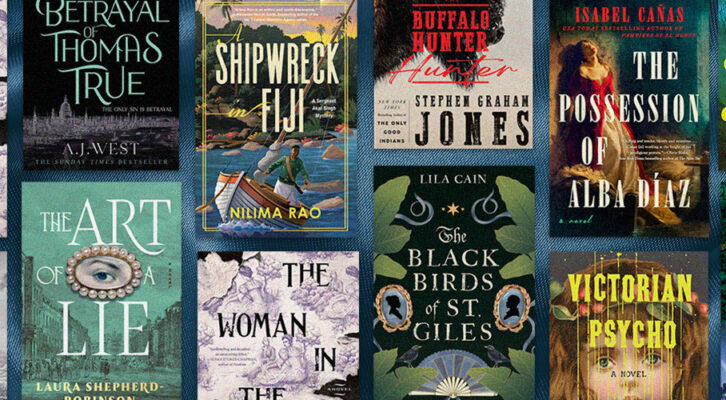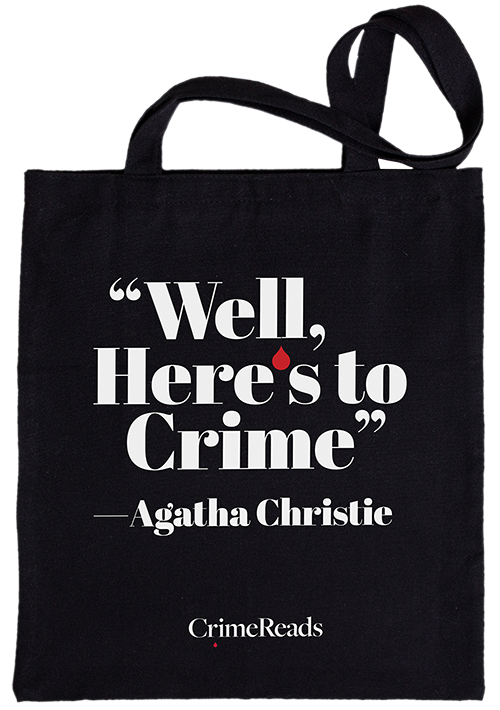This month saw the release of Darren Aronofsky’s adaptation of Charlie Huston’s crime thriller “Caught Stealing,” starring Austin Butler as a sidelined baseball phenom who gets caught in the middle of a crime caper while catsitting. Hank Thompson, Butler’s protagonist, comes from a long, illustrious heritage of crime fiction protagonists who love their pets, or in Hank’s case their neighbors’. It’s not hard to see why the motif endures: people love pets, and they can be a way of humanizing the often rough, morally ambiguous figures we’re expected to root for in the genre. Even more practically, they can free a writer from the awkwardness of having the protagonist talk to themselves. In honor of the film’s release, here are six of Hank’s contemporaries.
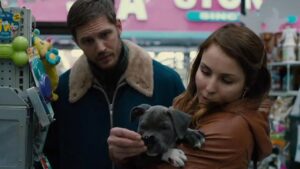
Bob Saginowski, “The Drop”
“The Drop,” an adaptation of Dennis Lehane’s novella, is mostly remembered as the final onscreen performance of James Gandolfini if it’s remembered at all, likely because its protagonist, played by Tom Hardy, tends to bleed together with Hardy’s own public persona. Bob is a morose, possibly neurodivergent loner who doesn’t talk much or do much beyond working the tap at his cousin’s mob-front bar. His life changes, however, when he finds an injured pit bull puppy in a trash can and nurses it back to health. Not long after, the dog’s abusive former owner (Matthias Schoenaerts), who happens to also be the abusive ex of Bob’s crush Nadia (Noomie Rapace) swaggers into the neighborhood, demanding the pup’s return. At the film’s climax, Bob reveals how dangerous he can be, coldly dispatching the creep because, as he tells Nadia, “he was gonna hurt our dog.” Can’t argue with that.

Carlotta Carlyle, the Carlotta Carlyle series
As crime fiction settings go, Boston tends to be among the least lighthearted, a cold gray city full of flinty-eyed Irish gangsters in the shadow of severe cathedral spires. Not so for Linda Barnes’ charming series, which stars six-foot redheaded cab driver Carlotta Carlyle, a sort of Beantown Kinsey Millhone. From book one, “A Trouble of Fools,” Carlotta’s adventures have also featured her cat, Thomas C. (Cat) Carlyle, who gets her mail and is listed as the holder of her phone number (Carlotta mentions there’s a Mother Jones subscription in his name). Thomas “has a disposition you could describe as independent, which I prefer, or surly, which is closer to the truth,” as Carlotta describes him, which may not be ideal for her but makes him an ideal companion for both the city and the genre.
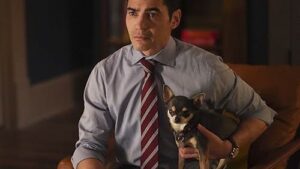
Will Trent, “Will Trent”
Like a lot of doting pet parents, Will Trent starts out resistant to the idea. In one of the very first scenes of the police procedural based on Karin Slaughter’s novels, Will (Ramon Rodriguez), a Georgia Bureau of Investigation agent with a troubled past, seeks to leave his late neighbor’s chihuahua at a shelter. But when shelter staff are evasive about whether they operate a no-kill institution, Will reluctantly takes her with him and before long Betty Maria White Trent (Betty to her friends) is his constant companion, to the point that, much to Will’s chagrin, his sitter Nico (Cora Lu Tran) makes “Bad Bitch Betty” a social media star. In one quiet scene, Will demonstrates the value of such a friend when his colleague Faith (Iantha Richardson) is distraught and he doesn’t have the words to comfort her. “It helps me,” he says, handing her the pooch to nuzzle.
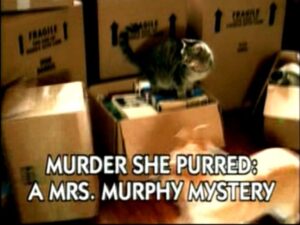
Mary Minor “Harry” Haristeen, the Mrs. Murphy mysteries
Many of us would be content to “only” be a major figure in second-wave feminism who was crucial in countering Betty Friedan’s prejudice against lesbians in the movement, but as it happens, Rita Mae Brown also wrote cozy mysteries. Harry’s inclusion may be a gray area, as in Brown’s series, it’s her cat Mrs. Murphy and her corgi Tucker who are themselves our leads, with their owner, a Virginia postmaster and amateur sleuth, playing catchup (Brown’s cat Sweetie Pie is credited as co-author). We are including them, however, because the books (exceeding 30 as of this writing) are so delightful in premise and execution. If you don’t like it, well, you’re mad about an article about fictional pets.

John Wick, the John Wick series
When a smirking Russian mob princeling callously kills retired hit man John Wick’s (Keanu Reeves) adorable beagle, it kicks off a revenge spree that would shape both Reeves’ career and the action genre for years to come. Purists might point out that Wick textually acknowledges he never had a chance to get that close to the dog, and his rampage is motivated far more by what she represented as a final gift from his late wife. But the counter is that the character’s love for dogs, and willingness to rain hell down on those who harm them, has become one of his most recognizable traits (scroll any story on social media about real-life animal abuse and you’ll likely see someone post his image). Wick seems to accept this memetic image of himself by the end of the first movie, adopting a scrappy shelter pittie that never leaves his side for the rest of the series.
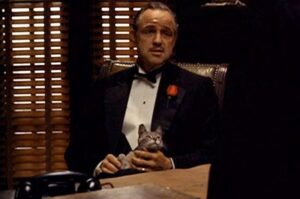
Vito Corleone, The Godfather
As the story goes, the cat that sits in Vito’s (Marlon Brando) lap in the opening of the crime epic was a stray that Francis Coppola found wandering the Paramount lot, and its loud purring ruined the original audio track. Wherever it came from, it’s become as much an icon as the movie’s human characters, to the point of inclusion in pretty much any parody (my personal favorite is the lizard Dom DeLuise strokes in “Robin Hood: Men in Tights”). On the one hand, it’s an extension of the story’s central irony, the aesthetic elegance and refinement of this man who can and does have men killed like he’s ordering coffee. But as a cat owner who enjoys a nice suit myself, it’s also a brilliant visual signifier of how Vito is quietly in control of most any room he enters. Cats come and go as they please and get hair everywhere, and yet here’s a man who keeps his at his side and keeps his tuxedo immaculate. Underestimate him at your peril.



